Crassula aquatica (L.) Schönlein
Water Pygmyweed
Crassulaceae
Plants of San Diego County HOME]
Protologue: H.G.A.Engler & K.A.E.Prantl, Nat. Pflanzenfam. 3(2): 37 (1891)
Pronunciation: Crás-su-la a-quá-ti-ca
Etymology: L. crassus, thick, referring to the fleshy leaves + aquatic, found in the water
Jepson eFlora Treatment
Jepson eFlora Key to Crassula
SD County Synoptic Voucher
Distribution:
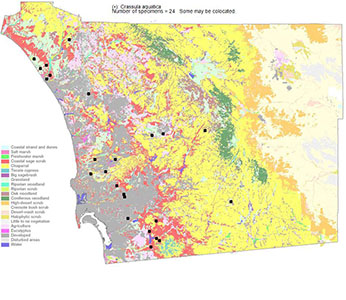
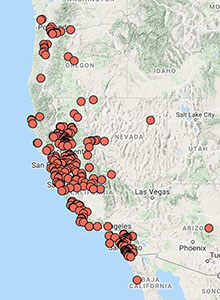
Left: S.D. County Plant Atlas (http://sdplantatlas.org). Right: CCH2. Click to see current herbarium records.
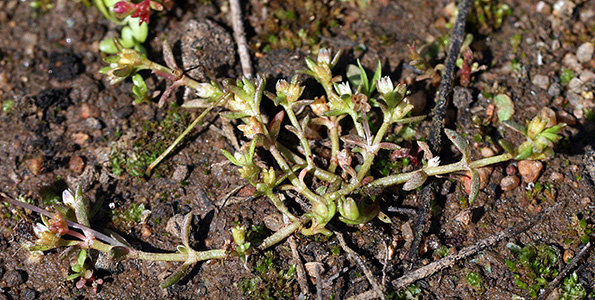
Crassula aquatica
Whole plant, and annual herb.
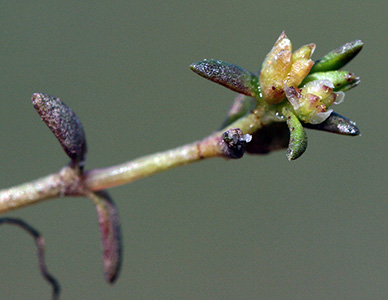
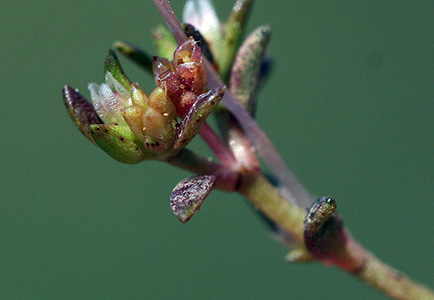
Crassula aquatica
Flower close-up, showing 4-carpellate, apocarpous gynoecium.
There is one flower per node, distinguishing this species from other annual Crassula spp.
Fruits are aggregates of 4 follicles (follicetum). Note open pericarps
after dehiscence (right image).
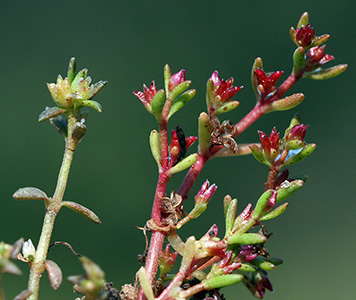
Comparison of Crassula aquatica (left) and Crassula solieri (right), the latter a native plant that can also be found in vernal pools.
Crassula aquatica has fruit units (follicles) that are less reddish and less recurved. Seed surface and sepal length and shape also differs between the two.
All photographs courtesy of Dr. Jon Reman.
Key to the two species, from the Jepson eFlora:
| Seeds with ± regular, continuous, longitudinal lines at 20×, ± dull or shiny but not glistening as if wet; follicles subtruncate at tip, suture abruptly outcurved in distal 1/4; sepals 0.5–1.5 mm, ovate to oblong ..... C. aquatica Seeds with irregular, interrupted, longitudinal lines at 20×, shiny, glistening as if wet; follicles oblique-acute at tip, suture gradually outcurved in distal 1/2; sepals 0.4–1 mm, deltate-ovate to lanceolate ..... C. solieri |
|---|
| Cal Photos images | Google images |